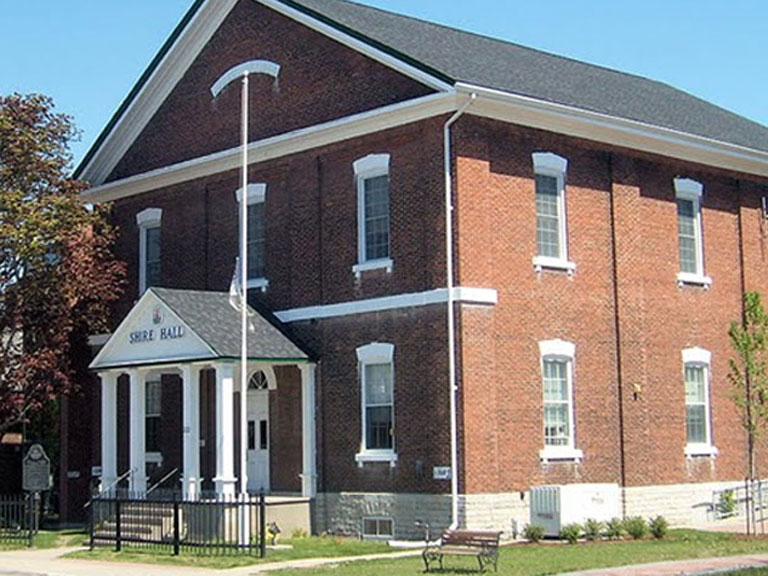County News
Local share

Plan to increase HST to fund local roads and bridges gets council’s support
Council was squeamish about advocating for a hike in the sales tax to support infrastructure renewal. Some were leery that the province might turn off its funding spigot if municipalities won a new funding source. Others worried that their own colleagues or future councils would use the new cash to fund projects other than infrastructure. Some worried that the impact of a one per cent increase to the Harmonized Sales Tax will have a greater impact on low income families than the wealthy. And there was a general unease about being seen to support a tax increase in an election year.
But Matthew Wilson, policy advisor to the Association of Municipalities of Ontario (AMO) had a simple question for the doubters at a council committee meeting last Thursday.
“If not this, then what?” asked Wilson. It is the same question he puts to Premier Kathleen Wynne, who rejected the idea out of hand in August when it was initially proposed at an AMO conference in Ottawa.
The infrastructure deficit in Ontario is currently about $4.9 billion—the difference between what is required to maintain the province’s roads and bridges each year and the amount currently being spent. It is a massive problem that is getting worse each year. Wilson calculates that a one per cent increase to the HST will produce a net amount of about $2.5 billion per year—dedicated to the renewal of roads and bridges.
In Prince Edward County, the infrastructure deficit is measured at approximately $38 million. Shire Hall typically spends about $6 million on its roads and bridges each year. This means that these structures are decaying faster than we can fix them. Wilson estimates that the Local Share plan would provide the County with a new revenue source of about $6.6 million each year.
But council wasn’t sure it could go along with this plan.
Councillor Kevin Gale worried about the message. By supporting this proposal were they letting the province off the hook? He was also skeptical that this or any provincial government would agree to it.
Wilson responded by saying that this campaign was a marathon rather than a sprint. “We are looking beyond the next election,” he said.
He added that the AMO had arrived at this proposal after years of consultation and deliberation. His confidence in the affordability of the plan comes from the fact that in recent past the HST was as high as 15 per cent, and that measures to establish rebates for low income families have been baked into the proposal.
He suggested that to accomplish the same goal, municipalities would have to increase capital expenditures by eight per cent per year for the next 10 years through property taxes. He noted property ownership is a poor indicator of one’s ability to pay increased taxes—particularly in rural communities with big needs and small populations.
Wilson also pointed to polling data that shows a large majority of Ontarians understand their municipalities have challenges in maintaining roads and bridges. A majority, according to AMO polling, are in favour of a one per cent increase to the HST, on the condition that it goes to municipalities.
Still, some council members were uneasy.
Councillor Gord Fox said he preferred the province reduce wasted spending rather than increase the HST. Councillor David Harrison wouldn’t support an increase to the HST because inflation already drives sales tax higher by about a billion dollars per year.
Wilson pointed out that this was because the Ontario economy is growing and therefore generating more HST revenue—that this was unrelated to the growing infrastructure deficit.
“There is only one cow to be milked,” countered Harrison.
Councillor Dianne O’Brien said she didn’t want “to put our hands into taxpayer pockets”.
But neither O’Brien, Harrison or Fox had an alternate plan to fund the growing infrastructure need in Prince Edward County. In the absence of such a plan, ratepayers will be on the hook for massive new property tax increases or an equally serious decline in the quality and navigability of County roads. Likely both.
What is your alternative?” asked Wilson. He acknowledged that the proposal was controversial. But that the scale of the problem required a “big and bold” plan.
“We are asking people to have a big discussion,” said Wilson. “Debate is healthy.”
Late in the discussion, Councillor Bill Roberts, seeking to build in some protection for the disadvantaged, suggested rewording the motion to ensure that the tax proposal not impose any additional hardship upon low and middle-income families.
He was persuaded that he and his colleagues are in the early strides of this marathon—that there will be time to shape and refine long before the finish line. He retracted his suggestion.
The motion to support the Local Share plan was approved.

Comments (0)